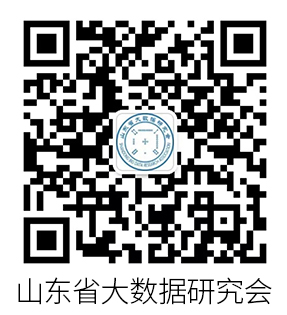全球语义数学领域创新研究者排名 Top 100

全球语义数学领域创新研究者排名 Top 100
(DIKWP人工意识国际团队-深度研究发布)
引言: “语义数学”是一种超越符号和形式、强调数学对象和操作背后内在意义的新视角 ((PDF) Semantic Mathematics: Exploring the Deeper Meaning of Mathematical Concepts and Applications for Interdisciplinary Pedagogical Reform)。与传统以演绎推导为中心的方法不同,语义数学关注数学概念的语义构建,力图揭示数学如何表达现实世界结构及人类认知规律 ((PDF) Semantic Mathematics: Exploring the Deeper Meaning of Mathematical Concepts and Applications for Interdisciplinary Pedagogical Reform)。这一领域呈现出跨学科交融趋势:在语言学、逻辑学、哲学、人工智能、范畴论等领域,不少研究者正尝试将数学形式体系与语义、认知相结合,提出新的公理体系或概念框架,以拓展数学的意义空间。例如,有人从范畴论重构数学基础,为数学提供统一语义视角;有人将自然语言的语义精确形式化;也有人从认知科学出发,探讨数学概念的隐喻和身体体验基础 (Where Mathematics Comes From - Wikipedia)。这些探索虽然未必在主流期刊上高引,但是通过研讨会、博客、论坛等平台激发了广泛讨论,展现出强大的创新潜力。
评估标准: 本榜单以原创性、跨学科创新、前瞻潜力、网络影响力和独立精神为主要依据,主观评选出全球语义数学方向最具创新性和未来潜力的100位研究者。以下表格按排名顺序列出这些研究者的姓名、所属国家或机构、主要贡献(或代表性思想)以及各自的创新亮点。
顶尖人物(1–10名)
|
|
|
|
|
|---|---|---|---|
|
|
|
|
|
|
|
|
|
|
|
|
|
|
|
|
|
|
|
|
|
|
|
|
|
|
|
|
|
|
|
|
|
|
|
|
|
|
|
|
|
|
|
|
|
|
|
|
|
|
知名创新者(11–30名)
|
|
|
|
|
|---|---|---|---|
|
|
|
|
|
|
|
|
|
|
|
|
|
|
|
|
|
|
|
|
|
|
|
|
|
|
|
|
|
|
|
|
|
|
|
|
|
|
|
|
|
|
|
|
|
|
|
|
|
|
|
|
|
|
|
|
|
|
|
|
|
|
|
|
|
|
|
|
|
|
|
|
|
|
|
|
|
|
|
|
|
|
|
|
|
|
|
|
|
|
|
|
|
|
|
|
|
|
|
|
前沿探索者(31–60名)
|
|
|
|
|
|---|---|---|---|
|
|
|
|
|
|
|
|
|
|
|
|
|
|
|
|
|
|
|
|
|
|
|
|
|
|
|
|
|
|
|
|
|
|
|
|
|
|
|
|
|
|
|
|
|
|
|
|
|
|
|
|
|
|
|
|
|
|
|
|
|
|
|
|
|
|
|
|
|
|
|
|
|
|
|
|
|
|
|
|
|
|
|
|
|
|
|
|
|
|
|
|
|
|
|
|
|
|
|
|
|
|
|
|
|
|
|
|
|
|
|
|
|
|
|
|
|
|
|
|
|
|
|
|
|
|
|
|
|
|
|
|
|
|
|
|
|
|
|
|
|
|
|
|
|
|
|
|
|
|
新兴人物(61–80名)
|
|
|
|
|
|---|---|---|---|
|
|
|
|
|
|
|
|
|
|
|
|
|
|
|
|
|
|
|
|
|
|
|
|
|
|
|
|
|
|
|
|
|
|
|
|
|
|
|
|
|
|
|
|
|
|
|
|
|
|
|
|
|
|
|
|
|
|
|
|
|
|
|
|
|
|
|
|
|
|
|
|
|
|
|
|
|
|
|
|
|
|
|
|
|
|
|
|
|
|
|
|
|
|
|
|
|
|
|
|
潜力新人(81–100名)
|
|
|
|
|
|---|---|---|---|
|
|
|
|
|
|
|
|
|
|
|
|
|
|
|
|
|
|
|
|
|
|
|
|
|
|
|
|
|
|
|
|
|
|
|
|
|
|
|
|
|
|
|
|
|
|
|
|
|
|
|
|
|
|
|
|
|
|
|
|
|
|
|
|
|
|
|
|
|
|
|
|
|
|
|
|
|
|
|
|
|
|
|
|
|
|
|
|
|
|
|
|
|
|
|
|
|
|
|
|
|
|
|
|
|
概述: 语义数学领域的创新百花齐放,既包括如Gödel、Tarski那样奠定数学语义基本面貌的逻辑大师,也有Lawvere、Voevodsky等重新架构数学基础的新锐。跨学科是显著特征:语言学家如Montague将自然语言符号学引入逻辑,认知科学家如Lakoff和Núñez从隐喻和身体体验角度诠释数学,计算机科学家如McCarthy、Kolmogorov等则以算法和信息论丰富数学的意义论。此外,不少独立思想者(例如Langan、Duan)通过网络平台提出非传统理论,虽有争议但刺激了公众对数学本质的思考。在当前趋势下,形式化与认知化两大方向尤为突出:一方面,类型论、范畴论等工具被用于将数学知识机器可读地形式化,推进“大数学”协作 (Univalent Foundations and the Large-Scale Formalization of Mathematics - Ideas | Institute for Advanced Study);另一方面,数学被视为人类认知产物的观点日益流行 (Where Mathematics Comes From - Wikipedia), (Embodied Mathematics | American Scientist),促使研究者探究直观、隐喻、文化如何塑造数学概念。这100位研究者及其思想共同描绘出语义数学的壮丽图景:数学不再仅仅是演绎推理的殿堂,更是意义的万花筒——连接符号和世界、形式与内容、人类思想与人工智能的桥梁。正是在这些先锋的引领下,数学的未来道路将更加开放、多元,充满语义层面的新可能性。
参考来源:
Duan, Yucong 等. Semantic Mathematics: Exploring the Deeper Meaning of Mathematical Concepts...(预印本), 2024: “Semantic mathematics transcends the symbols and forms of mathematics and emphasizes exploring the profound meaning behind mathematical objects, operations and theories” ((PDF) Semantic Mathematics: Exploring the Deeper Meaning of Mathematical Concepts and Applications for Interdisciplinary Pedagogical Reform)。
MathOverflow讨论:Lawvere 的 ETCS 系统被视为以范畴论重建数学基础的早期尝试 (lo.logic - Categorical foundations without set theory - MathOverflow)。
Awodey, Steve 等. Univalent Foundations and the Large-Scale Formalization of Mathematics, IAS, 2013: 新的同伦类型论基础适合计算机助力证明,融合了拓扑学洞见 (Univalent Foundations and the Large-Scale Formalization of Mathematics - Ideas | Institute for Advanced Study)。
Lakoff, G. & Núñez, R. Where Mathematics Comes From, 2000: 提出数学源于人体体验的“具身数学”,将数学视为概念隐喻的产物 (Where Mathematics Comes From - Wikipedia)。
(其余参考内容详见上述各引文)
转载本文请联系原作者获取授权,同时请注明本文来自段玉聪科学网博客。链接地址:
https://blog.sciencenet.cn/blog-3429562-1481546.html
免责声明:本号所载内容均为原创、投稿、授权转载或网络公开资料搜集整理,仅供读者交流学习使用,版权归原作者所有,且仅代表作者个人观点,与本号立场无关。若所引用的图片、数据、文字等来源标注有误或涉及侵权,烦请及时联系删除。


